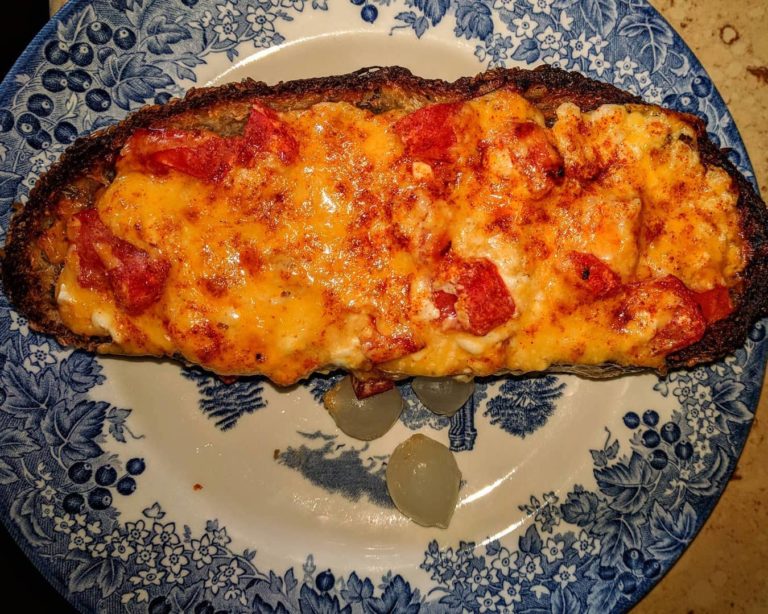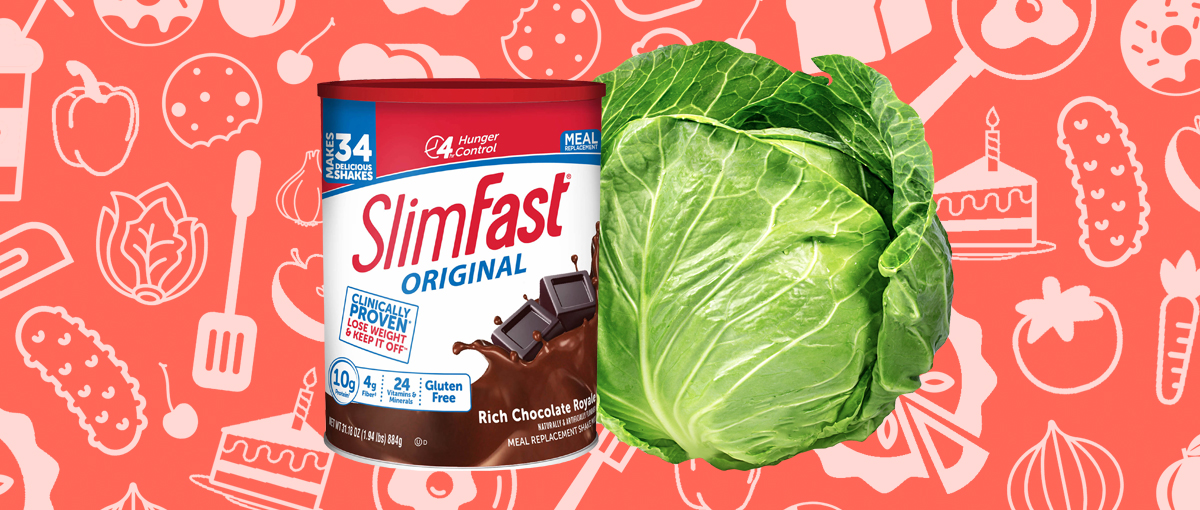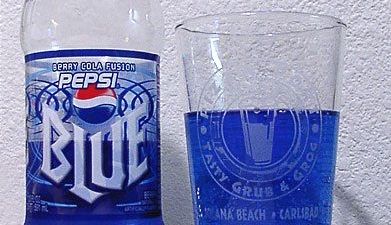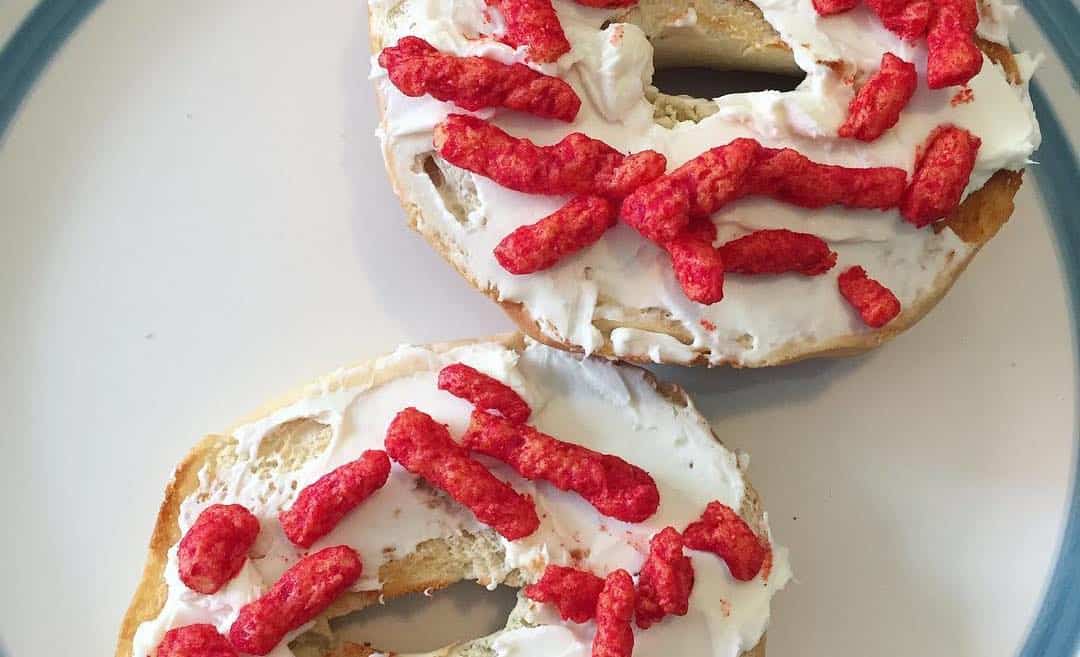In the ten years that kicked off the 1900s, America watched as the Wright brothers made the first powered flight, the first ever feature film was released (in Australia, not Hollywood), the FBI and NAACP were formed, and Albert Einstein published his theory of relativity.
These new beginnings extended to the kitchen. In 1906, Congress passed the Pure Food and Drug Act, giving the government unprecedented power to intervene in the manufacturing and distribution of foods, in the hopes of forcing the industry to improve quality.
1. Popcorn

C Creators & Co./Wikimedia Commons/Public Domain
In 1901, the Pan-American Exposition in Buffalo, New York, popularized popcorn.
The snack itself wasn’t new.
Pre-Columbian people had been growing and eating this small, hard maize for over 4,000 years, and people had been tinkering with ways to cook it throughout the 19th century.
But it’s believed that this grand fair was when popcorn gained its mass appeal, which was later spurred on by its status as the cinema food of choice.
[Ad]
2. Campbell’s Soup
Paris awarded Campbell with a medallion that their tins wear to this day.
Look closely at a tin of Campbell’s soup.
You’ll see that that golden circle in the middle is actually a medallion.
[Ad]
Although the first tin of tomato soup appeared on shelves in 1895, it was at the 1900 Exposition Universelle in Paris that they received a medal for product excellence. They were so pleased, they put it on their label for all to see.
[Ad]
3. Orange Omelette
Yes, you read that right. While today we like a glass of orange juice or a mimosa on the side of our omelette, back in the 1900s, people were mixing the two together.
[Ad]
And it’s a laborious process.
The recipe from a 1908 cookbook requires the cook to remove all the pith and seeds from the orange, cut it, mix with sugar, and leave it to form a syrup. Once it’s ready, fold the syrup into the center of your eggs.
We’ll stick with ham and cheese, thanks.
4. Milk Chocolate Hershey Bars
Milton S. Hershey wanted to bring chocolate to the masses.
Hersey was originally the founder of a caramel company.
However, he was inspired to learn about milk chocolate by German chocolate makers he met at the Chicago World’s Columbian Exposition in 1893.
[Ad]
After a few years selling cocoa, in 1900, he released the company’s first Hershey milk chocolate bar. The famous Kisses came along a little later, in 1907.
[Ad]
5. Lady Baltimore Cake
The namesake behind this classic Southern cake is a mystery.
It was a popular choice for weddings in the South.
A Lady Baltimore consists of layers of sweet sponge frosted and filled with frothy, light egg white frosting, with raisins, figs, and chopped nuts added in between each layer.
[Ad]
Although no one knows exactly who came up with the recipe first, the cake was served at the Lady Baltimore Tea Rooms in Charleston, SC, around the turn of the century, and popularized outside the state thanks to author Owen Wister’s 1906 novel Lady Baltimore.
That’s right.
He was so obsessed with the cake that he named his novel in its honor!
6. Peanut Butter And Jelly Sandwich
Your favorite childhood snack started out as fancy food.
The first ever recipe combining peanut butter and jelly came about in 1901.
It is credited to Julia David Chandler, who wrote it up for The Boston Cooking School Magazine of Culinary Science & Domestic Economics.
Back then, it was seen as posh party food.
It took an improved peanut butter recipe in 1922 and the invention of sliced bread in 1928 to make it more accessible to all, especially kids.
7. Oysters Rockefeller
As rich as their name! When Jules Alciatore took over Antoine’s Restaurant, a French hot spot in New Orleans, LA, in 1899, he was known as an oyster expert.
[Ad]
The restaurant was struggling to get hold of its most popular ingredient: snails.

(Shyman/iStock)
So he adapted the recipe consisting of herbs and green vegetables to go with oysters.
He wanted to give it a name to signify the richness of the dish, and settled on Rockefeller after tycoon John D. Rockefeller.
In the following few years, the dish’s fame spread.
But to this day, no one knows the original recipe. Alciatore was also fairly good at marketing himself, and keeping the exact ingredients under wraps kept folks coming back.
Even the chef’s grandson refused to give the recipe up.
In Antoine’s Restaurant Since 1840 Cookbook, Roy F. Guste Jr., Alciatore’s grandson, said he wouldn’t reveal the secret: “The original recipe is still a secret that I will not divulge…If you care to concoct your version, I would tell you only that the sauce is basically a purée of a number of green vegetables other than spinach.”
[Ad]
8. Pigs In Blankets
And we can almost guarantee these are not the pigs in a blanket you’re thinking of.
If we aren’t talking about a cute animal video…
…we’re usually thinking of those tiny hot dogs wrapped in pastry or dough that were a staple at kids’ parties.
But this recipe from 1908 is just a touch fancier.
Remove an oyster from its shell, wrap it in a strip of bacon, skewer the two together, and cook until the bacon is crisp.
9. Chocolate Brownies
Chocolate wasn’t always involved. Which, wait… then how are they chocolate brownies?
Now it’s hard to imagine a brownie as anything other than a gooey, chocolatey treat.
But when the term was first introduced, by Fanny Farmer in the 1896 edition of her book The Boston Cooking-School Cookbook, there was no chocolate involved.
The first brownie recipe to include chocolate was published in 1899

Pixabay/Public Domain
It was called Brownie’s Food. The recipe was included as part of a Maine community cookbook, although the cook who wrote it was from Wisconsin!
In 1906, Farmer updated her cookbook to include a chocolate brownie.

Meal Makeover Moms/Flickr/CC BY-ND 2.0
And we’ve been enjoying them ever since. Can you imagine the world without chocolate brownies?
[Ad]
10. Wonders
They probably didn’t live up to their name.
With so many, er, wonderful foods around now, it’s hard to know exactly what happened to these savory cookies.
Maybe they morphed into something else, or maybe we replaced them with more exciting variations.
[Ad]
As described in a recipe from 1908, they are made from salty dough, rolled flat and cut into circles, and then fried until golden brown.
11. Instant Coffee
It’s been brewing for a lot longer than you might think.
As with many foods and beverages throughout history, there is some dispute over who first came up with the idea of selling coffee as a powder that became a drink when mixed with hot water.
[Ad]
The first patent for such stuff goes back to 1890, when David Strang, a New Zealander, applied for a patent for “soluble coffee powder.”
But for a long time, it was thought that a chemist from Tokyo named Sartori Kato was the innovator, thanks to his display at that very same Pan-American Exposition in 1901.
[Ad]
And in 1906, another player entered the game when Cyrus Blanke introduced his version, Faust Coffee.
This was named for the St. Louis cafe where he supposedly came up with the idea.
12. Blushing Bunny
No rabbits required. This is a rabbit dish vegetarians can enjoy, since it doesn’t involve any rabbits or meat products.
Then what’s with the name?
According to a recipe from 1908, the blushing bunny is close to a traditional Welsh rarebit: it’s melted cheese mixed with butter and tomato soup, seasoned with mustard, pepper, and lemon juice, and served up on toast or bread.
Who’s going to add this to their next charcuterie board?

terri_bateman/Wikimedia Commons/CC0
13. Canary Pudding
Don’t worry, this is another misleading title.
As with the blushing bunny, there are no canaries in this British pudding.
Instead, it probably gets its name from its bright yellow color because this 1908 recipe calls for the grind of one lemon.
[Ad]
This dish was around in the Victorian era, making an appearance in classic British cookbook Mrs. Beeton’s Book of Household Management in 1861, and remained popular enough to become a staple in many future cookbooks.
In the early 1900s, it was even recommended as a good food to feed people who were unwell.

Ella Ollson/Piexels
And folks still love to make the tart dessert with a modern spin.
[Ad]
14. Poor Man’s Cake
We don’t know if this dessert name would fly anymore.
The theory behind this cake and its unfortunate name was that it contained very little fat, which made it cheaper to make.
Traditionally, Poor Man’s cake is made of brown sugar, hot water, a bit of shortening, flour, and raisins. You can add clove, cinnamon, and other spices to taste.
[Ad]
The cake became even simpler over time.
It wasn’t until the Great Depression of the 1930s, .that the recipe became immensely popular. The older recipe uses just one egg and two tablespoons of butter, but versions that came after often cut out even those small portions.
[Ad]
15. Rumford Dyspeptia Bread
It’s not meant to sound delicious.
This falls somewhere between food and remedy.
In 1908, the Rumford Chemical Works of Rhode Island, who made baking powder and other chemicals, released The Rumford Complete Cookbook.
The recipe was created by Lily Haxworth Wallace.
It included this quite grim-sounding recommendation meant for “those with weak digestion who cannot assimilate bread prepared with yeast.”
[Ad]
It was made from flour, salt, and baking powder, mixed to a soft dough, kneaded for two minutes, left to rise in a greased pan, and then cooked. No word on whether it worked, but we won’t be trying it ourselves.
16. Eggs In Prison
Charged with deliciousness. This was another 1900s dish that became popular during the Depression, since it uses up leftovers at relatively little expense.
It actually sounds pretty delicious.
In this 1908 recipe, you take cold meats and stale breadcrumbs, pat them into a mold like a muffin tin, and break a raw egg into the center. Then, cook it in the oven until the egg is firm. Break it out for your next brunch.
[Ad]
17. Coca-Cola
This origin story of Coca-Cola is a bit of a rollercoaster.
It’s hard to believe there was a time when people didn’t know the most recognizable drink in the world.
Coca-Cola was created in 1886 by a pharmacist in Atlanta, GA, named John S. Pemberton — not as a refreshing drink, but as a tonic to “cure” nearly every illness you can name.
[Ad]
But you couldn’t just pick up a can or bottle back then.

Wikimedia Commons/Public Domain
It was sold as syrup to soda fountains, and by 1900, sales hit 370,877 gallons. It wasn’t until 1899 that you could buy Coca-Cola in a bottle.
Meanwhile, across the pond, Britain didn’t get any Coca-Cola until 1900.

Boston Public Library/Wikimedia Commons/Public Domain
And it wasn’t until around 1903 that they stopped putting cocaine in the drink!
[Ad]
18. Dr. Pepper

The Horned Frog/Wikimedia Commons/Public Domain
Made to taste like medicine smells.
Like Coca-Cola, Dr. Pepper started life as a syrup served at soda fountains.
Also like Coca-Cola, Dr. Pepper was created by a young pharmacist in the South.
Charles Alderton lived in Waco, Texas, and when he wasn’t mixing up medicines, he was experimenting with different soda flavors.
Supposedly, the taste of Dr. Pepper was inspired by the smell of the medicines in the pharmacy (which may change how you feel about the flavor itself). Although Alderton had his Dr. Pepper syrup down by 1885, he lost interest in taking it further and passed it on to two colleagues.
[Ad]
It was popular in Waco, but it was at the St. Louis World’s Fair that they were able to get the drink out to the general public, and Dr. Pepper became a national favorite.
19. Devil’s Food Cake

Pixabay
Sin-sational. Generic chocolate cakes had been around for many years, but the first cake recipe with “devil” in the title appeared in about 1902.
There’s a myth that the name comes from adding beets to give it a reddish color.
While some bakers may do that today, the original recipes were for a rich, dense, slightly spiced chocolate cake.
[Ad]
The name may have come about to distinguish it from angel cakes.
These were light, fatless sponges popular in the Victorian era — or it might have simply been in reference to the devilishly delicious indulgence encased in those layers of chocolate.
[Ad]
20. Club Sandwich
You had to literally join the club.
While most sandwiches have names that hint at their ingredients, the club sandwich is named for its place of origin — in posh, gentlemen-only clubs.
[Ad]
This stacked sandwich can be found on menus as early as 1889.
But in 1899, it found its way into a recipe book, where anyone could make and enjoy it, and it was in the 1900s that it moved from the realm of men to being a “dainty” snack served up in restaurants frequented by ladies who lunched.
[Ad]
21. Pizza

Unknown Author/Wikimedia Commons/Public Domain
From peasant food to everybody’s favorite.
Pizza has a long history, starting out in Naples as a cheap dish favored by the peasant classes.
But Americans first got their chance to enjoy a slice or two in the early 1900s. And the rest is histroy.
There’s some debate over who opened the first pizzeria in New York City.

Leonard J. DeFrancisci/Wikimedia Commons/CC BY-SA 3.0
Blut the most famous was run by and named for Italian immigrant Gennaro Lombardi and opened in 1905.
[Ad]
Lombardi had been selling individually wrapped pies from his grocery store to workers who needed filling food on the go, when he reasoned that other people might appreciate the dish.
The idea soon spread and today, pizza regularly tops polls of people’s favorite foods.
[Ad]
22. Jell-O

Gennessee Pure Food Company/Wikimedia Commons/Public Domain
It took three separate attempts to make this stick.
Your favorite childhood dessert was created by a couple named Pearle and May Wait in the small town of Leroy, NY.
Their cough remedy and laxative business was failing, and they were experimenting with new foods to sell when they accidentally invented the wobbly, fruity dessert, which May named Jell-O.
[Ad]
However, the Waits didn’t have the funds to market the product.
So they sold the trademark to Orator Frank Woodward in 1899, who also couldn’t shift the stuff and sold it on to entrepreneur Sam Nico in 1900.
[Ad]
Unlike his predecessors, Nico figured out how to sell Jell-O.

Internet Archive Book Images/Wikimedia Commons/Public Domain
And by 1902, Jell-O sales hit $250,000. In 1904, it was declared “America’s Favorite Dessert” by an ad taken out by the company in Ladies Home Journal.
The marketing ploy may have been cheeky, but it seems like it worked.

Wyeth N. C./Wikimedia Commons/Public Domain
[Ad]
23. Kraft Cheese
A resourceful businessman took the lemons life handed him and built a cheese empire.
Kraft is now one of the largest food manufacturers in the world, but everyone has to start somewhere, and in their case, that starting point was Chicago. Canadian James L. Kraft immigrated to New York in 1903, where he invested in a cheese business.
[Ad]
While he was on a trip in the Windy City, he learned that that business had folded, leaving him stranded.
Kraft decided to stick with what he knew, and started buying and selling wholesale cheese. By 1909, he’d made enough money to bring his brothers on board, and a little later, in 1914, they built their first cheese manufacturing plant.
[Ad]
The product that shot them to fame was their processed cheese, which allowed them to sell cheese to places their competitors’ products couldn’t reach. It also got them a contract with the U.S. government looking to feed millions of troops fighting in World War I.
[Ad]
24. Ice Cream Cones
An icy subject.
Ice cream has been around in various forms for centuries, but it wasn’t until around 1900 that it met its perfect partner, the cone. There is some contention over who did it first.
Italian immigrant Italo Marchiony claimed to have invented his version in New York City, and was granted a patent declaring this in 1903. But the St. Louis World’s Fair the following year saw a new version.
The story goes that Ernest A. Hamwi, a Syrian stallholder at the fair, was selling zalabis (waffle-y pastries) next to an ice cream vendor.
When the ice cream vendor ran out of bowls, Hamwi fashioned his zalabis into cones to hold the ice cream. From there, enterprising locals started making specialist machinery to make the cones, eventually resulting in a classic dessert duo.
25. Popsicles
They were literally invented by a child.
In 1905, in Oakland, CA, 11-year-old Frank Epperson mixed up a cup of water with flavored soda powder using a wooden stick and accidentally left it all outside overnight.
When he went to get it in the morning, the mixture had frozen, with the stick forming a handle that he used to lever it out.
[Ad]
Frank named his invention Eppsicles, but since he was just a kid, it wasn’t until 1923, when he made them for his own children, that he was able to act on it.
He filed a patent for the renamed “popsicles” that year, and they took off immediately. It was estimated that 8,000 popsicles were sold a day at Coney Island in the 1920s — worth the 17-year wait!
[Ad]
26. Nabisco Sugar Wafers
This is what happens when two giant cookie companies unite.
Back in 1901, Nabisco wasn’t the name of a giant cookie corporation.
It was part of a name for a specific product made by a newly formed giant cookie corporation.
In 1898, the New York Biscuit Company merged with the American Biscuit & Manufacturing Company to form the National Biscuit Company.
[Ad]
Get it? Na-Bis-Co.
The word was first used to introduce Nabisco Sugar Wafers, which are still available today, and it wasn’t until 1971 that the company officially changed its name from the National Biscuit Company to Nabisco.
In 1902, Nabisco gave us Barnum’s Animal cookies, and ten years after that, they filed a trademark for Oreos–which also has a somewhat contentious past.
[Ad]
27. Puffed Cereal
Breakfast brought to you by another happy accident.
In 1901, botanist Alexander P. Anderson was trying to measure how much moisture was in a grain of starch, which involved combining the cornstarch with wheat flour and heating the mix to a very high temperature. This process made the cornstarch puff up.
[Ad]
After more experiments, he patented his method for “swelling starch materials.”
And in 1904, he took it to the St. Louis World’s Fair, where he blew the rice out of bronze tubes into a giant cage. This convinced Quaker Oats to take his idea on, and puffed grains of all kinds were marketed as a breakfast cereal.
[Ad]
28. French’s Mustard
A family affair.
R. T. French was a spice seller in New York, who founded his own business in 1876.
This would later be called the French & Sons Spice Company. However, it’s his two sons, Francis and George, who made the family name famous.
[Ad]
In 1904, 11 years after their father’s death, they took a mild, creamy mustard to the St. Louis World’s Fair, which also happened to be serving hot dogs, and a new American obsession was born.
[Ad]
29. Banana Split
A divisive dish.
Combining different ice cream flavors and adding toppings like fudge to make sundaes was already common practice in ice cream parlors by the 1900s — but who first took it upon themselves to bring a banana into the game is up for debate.
[Ad]
In one corner, we have Wilmington, OH, claiming that it was invented there in 1907. And in the other corner, we have Latrobe, PA, arguing that local drugstore worker David Strickler first came up with the banana-and-ice-cream combo three years earlier, in 1904.
Either way, it’s here now, and that’s what matters.
[Ad]
30. Chicken Tetrazzini
You know you’ve made it when you’ve had a dish named in your honor (see Oysters Rockefeller), and that’s exactly what happened to Italian soprano Luisa Tetrazzini.
[Ad]
Worthy of a prima donna.
Legend has it that this dish of diced chicken and spaghetti in a creamy sauce topped with Parmesan was made in San Francisco, in 1908, in her honor — although since she reportedly preferred plain food, she may never have eaten it.
The trends in the 1920s and 1930s are even more fun.
Flapjacks, rabbit meat, and pineapple upside-down cake — these are just a few of the most popular dishes during America’s Jazz Age. See if you can guess what else was popular during the era here.








